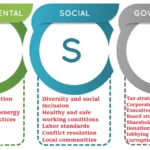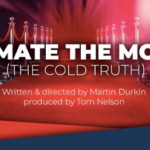
The WWF does not mention the hundreds of polar bears shot for hunting tourism annually, but advocates 'saving' the species in the most expensive and ineffective way
Last week, the Dutch biggest national newspaper De Telegraaf printed a frontpage-article on 2 reports that investigative nature and sciencejournalist Rypke Zeilmaker published for De Groene Rekenkamer, also receiving wide attention on national radio and television newsshows. The reports are now translated with the title ‘World Wide Government Fund’. We feel some of it’s key findings are relevant for an international audience.
English Version: The World Wide Government Fund
Media attention in Holland focussed mostly on Dutch WNF’s (25 percent) higher spending on marketing than claimed and it’s very broad definition of ‘conservation’ to reach it’s ambitious target. And WWF’s dishonesty in campaigns on flag ship species like the Giant Panda, whose population halved in the period that WWF is active in China, while WWF Australia claims it halted the decline and calls it’s work ‘reason to celebrate’.
Contrary to it’s claims WWF’s spending cannot be tracked to ecological nor scientific criteria it advertises with, with only 6 percent of it’s annual budget arriving in African Conservation projects after overhead correction of around 20 percent. (an overhead that is not ‘high’ compared to other NGO’s)
- Part 1 on finance, network and economic views can be downloaded here
- Part 2 on the (lack of) effectiveness of WWF in conservation can be downloaded here
The English workingtitel of the reports ‘The World Wide Government Fund’, is ironic and both serious: the network behind WWF DOES use all means available for more international control, but their strategy through international (ever failing) conferences, lobbying for more governmental control and failing predictions never truly works. And their deals with business have various effects, as the German Der Spiegel already noticed.
Key findings in this blog and reasoned criticism appreciated
For the lazy reader (which means most of you), in this blog some of it’s key findings are summed up. Due to a limited budget the quality of the translation of part 2 will not win an English literary prize. But the facts are there for anyone to test on it’s credibility with all claims made supported by footnotes and irrevertable proof. I hope some of my work here is not too dissappointing for the more critical readers, and well reasoned criticism on the reports is highly appreciated.
World Wide Government Fund part 1:
The first report analyzes the financial side of this largest green multinational, with an average income over half a billion euro’s. Key findings are:
- The Dutch WNF spends almost half of it’s income on marketing and fundraising, and thus falsely claims it spends 81ct per euro on nature conservation. Mobilizing children for your own (fundraising)campaings is ‘nature conservation’according to the Dutch WNF-definition. 67 percent of it’s staff is dedicated to marketing and finance, twice the amount of conservation personnel
- The Dutch WNF historically spents less then 1 percent of it’s budget (>60 million euro’s) on Dutch Nature and this is mostly campaigning money
- WWF is a governmental extension, with around 20 percent of it’s budget from government agencies. The European WWF-lobbying office in Brussels receives .65 million euro’s from the European Commission to lobby de European Commission, resulting in millions of euro’s of grants from Europe Aid per year, with no intention from EU-officials to question this privilige.
- WWF is both supporting businesses that potentially harm it’s core business (nature conservation) ánd supporting anti-economic, anti-industrial and anti-democratic views that harm businessess and personal freedom.
- Discussion is needed on the relevance of the WNF/WWF charity status
World Wide Government part 2
The second part deals with claims made by WWF in ‘saving’ the socalled flagship species it advertises with to gain more funding, with the black rhino being the first campaigning animal to advertise with on the Daily Mirror in 1961.
- Population of black rhino dropped by 90 percent áfter WWF started ‘saving’it while WWF claims it saved the animal from the brink of extinction. The first money for the rhino arrived only 12 years after the first campaign
- Population of the panda halved in the time that WWF is active in China, and WWF falsely claims it halted it’s decline. The popular population number ‘1000 left in the ’70’s was reached by halving the populationnumber of the sensus on paper ’to urge the conservation process’. In reality population was 2000 animals in the Chines sensus in the ’70s but it halved áfter WWF and CHinese government started protecting it.
- There is no correlation between spending of WWF and scientific conservation priorities
- Of the budget of >600 million euro’s in 2006 only 6 percent arrives at African Conservation projects
- Marketing on ‘saving polar bears’of the Dutch WNF is misleading, with WWF advocating the most ineffective strategy to ‘save’it. One year abolition of commercial hunting tourism on polar bears in Nunavut for NO COST is compensated by 500 years of climate policy Kyoto style for thousands of billions of euro’s, if assumptions made on the relation between climate policy, temperature, sea ice and polar bears would be scientific.
On the absence of environmental journalism
- Ofcourse I am indebted to many people before me who started asking the right questions. Some kudo’s for the late Kevin Dowling, who was one of the first true journalists researching the agenda of WWF, in a medialandscape where most ‘journalists’ copy statements made by ‘green’NGO’s without ever questioning it’s content.
Contrary to the lazy guild of mainstreamjournalism, far more relevant work on conservation ngo’s has been done by social scientists like Dan Brockington and James Igoe, who in 2009 helped me greatly with sending some of his preliminary work while i wrote a story on effective conservation for a national magazine. The reports are partly constituted from the ‘leftovers’ of earlier work i did. In the field of conservation there are many scientists, who did research on conservation effectiveness on whose publications and comments i could rely, like Ben Halpern.
We can also compliment Wilfried Huismann, who made some documentary’s on various WWF-activities, though I would not share his anti-business approach nor his ideological resistance to genetic engineering. And ofcourse the German magazine Der Spiegel did good work on WWF’s cooperation with business.
Then there’s Donna Lafromboise who looked at WWF’s involvement in IPCC. To my taste she wants to find more than she actually did find, and compensates this with heated prose. Still she made some valid points, though I did not make use of her work and avoided any links to the heated issue of ‘climate’. My criticism focusses on ecology and conservation which has been my background in writing, study and work for many years now and it is my attachment to nature that has made me somewhat suspicious of WWF’s practices.
So although true environmental journalism is not absent, it is rare because most journalists write on environmental issues as if they work for Greenpeace, selling copied press releases from a campaigning group as their own news story. It is notable that most of the self-acclaimed ‘quality newspapers’ (= with the right political quality) ignored my reports.
Untill now, the staff of the Dutch WWF avoided a debate with me on the findings, that the national radio and television intended to organise. They refused to come to the talkshow. It seems they are well satisfied with al the millions they receive and do not wish to change this definition of conservation success. They know that media attention will drift away.






Tally-ho!
Did you send the article to WUWT, Gosselin and other bloggers?
Het kan geen kwaad je rapporten ook even naar het Koninklijk Paleis in Den Haag te sturen Rypke:
http://www.nu.nl/binnenland/2892998/wnf-haalt-twe…